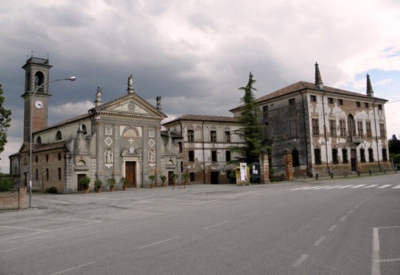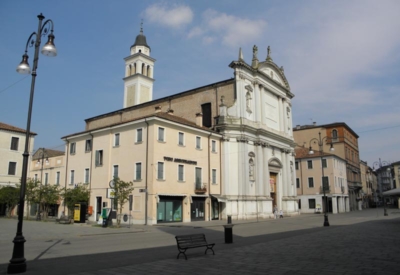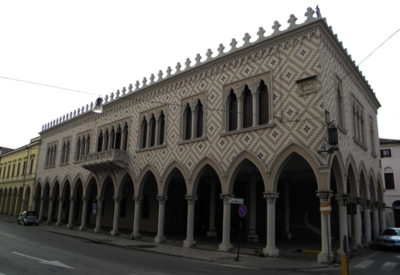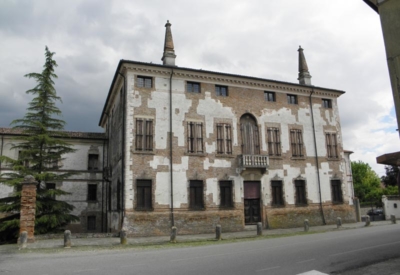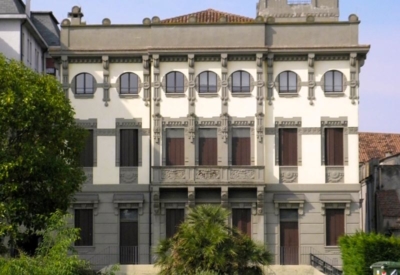BADIA POLESINE
Formerly called ‘La Badia’, referring to the well-known Benedictine abbey of S. Maria della Vangadizza around which the town developed. After 589, due to the deviation of the Adige at Cucca, in modern-day Veronella, the river changed its ancient course. As a result, the Athesis left the islands of Portilia (Porcilia) Menerva, Montagnana and Este and the riverbed moved further southwest towards Legnago with Porto, Castelbaldo and Badia, which was the mouth of one of the Seven Seas, as recounted by Pliny the Elder in Naturalis historia (within the lagoon).
Around the year 900, the Marquis of Mantua, Almerigo, built the Abbey, later ceded to the Benedictine monks, independent of the diocese of Adria. In 1200 Badia was surrounded by a ditch and the town had three gates. In the 1400s, the Vangadizza Abbey began to decline, passing into the ownership of the French d’Espagnac family and subsequently suppressed by Napoleonic decree in the 19th century.
The town of Badia Polesine came under the rule of the Este family, Padua, the Republic of Venice, the French (from 1797) and then the Austrians until 1866, when Veneto was annexed to the State of Italy. Badia Polesine is also the last town along on the ancient pilgrimage route, the Romea Annia. Pilgrims from northern Europe and eastern Europe converged on the important Roman settlement of Iulia Concordia, today Concordia Sagittaria. From here, they travelled over 200 kilometres across the whole lower Po valley from east to west along the Romea Annia, to reach the ancient Abbey of Badia Polesine. In the 19th century, the town grew and a theatre, hospital and numerous public works were built. The bridge over the Adige connecting Badia with the province of Padua and the Verona-Rovigo railway line were also built.
In 1928, the municipality included part of the suppressed municipality of Crocetta in its territory, which became a town district, as well as the former municipality of Villa d’Adige. The San Nicolò district was bombed and destroyed during the Second World War, in April 1945. In the 1960s, new industries sprang up in the town as a result of Italy’s economic boom. In the mid-1990s, the Transpolesana highway was finished meaning that numerous businesses and industries developed nearby.
Worth Visiting
The Vangadizza Abbey (Abbazia della Beata Vergine della Vangadizza) – 10th century
The Archpriest’s Cathedral of San Giovanni Battista
The Church of Sant’Antonio
The Oratory of the Beata Vergine Maria della Salute
The Church of Sant’Antonino (Salvaterra)
The Church of San Sebastiano Crocetta
The Church of San Giorgio martire (Villafora)
The Church of Santa Maria della Mercede (Colombano)
The Church of San Costanzo
Palazzo Rossi, dating back to the 18th century. It was recently restored and rare decorations by Venetian painter and decorator Giovanni Biasin were uncovered
Palazzo Rosini, built in the 16th century
Palazzo Bassi, built in the 17th century
Palazzo Picinali, built in the late 19th century
The covered market, in Gothic-Venetian style, built in the early 20th century
The Town Hall and the Torre dell’Orologio (Clocktower) rebuilt in the 17th century
Don’t Miss
Parco “Bruno Munari”
Giardini della Vangadizza
Giardino dell’Abate
Giardini del Foro Boario, dedicated to the values of the French revolution
Oasi Valle della Buora

